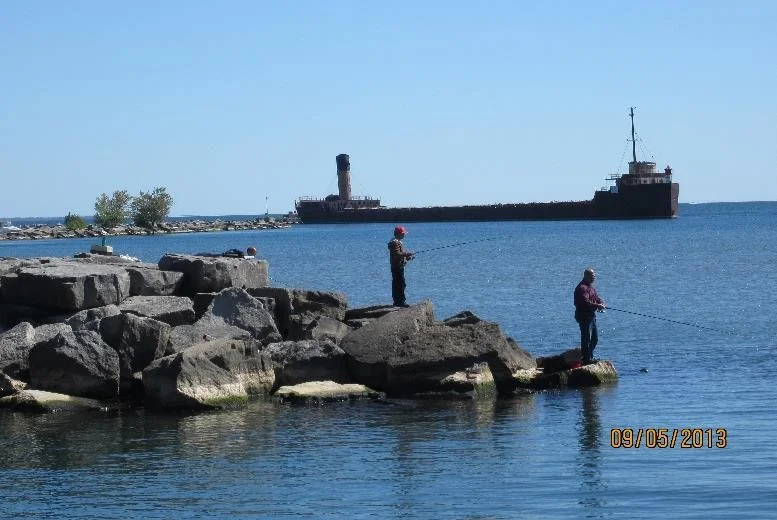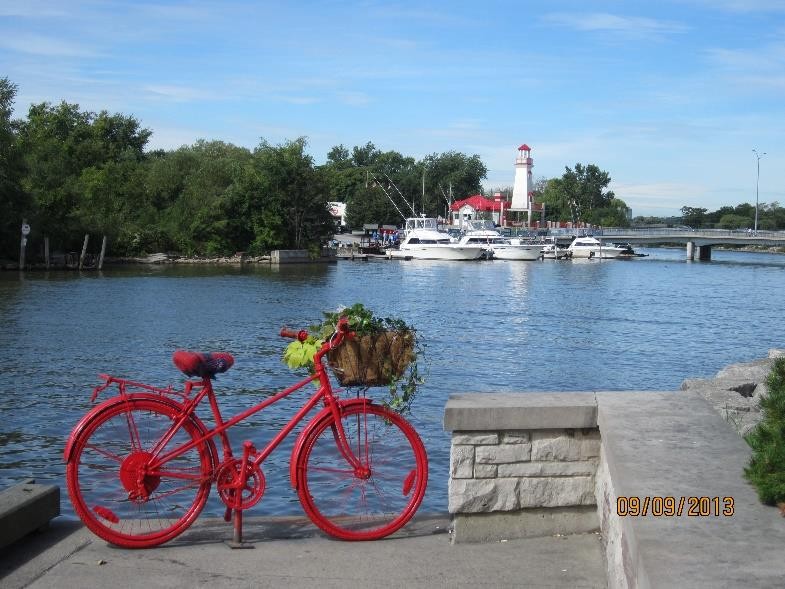A running history of Mississauga's Port Credit
/Edgar Frondozo reached out to us with a wonderful story and pictures of Port Credit that we're happy to share with you.
Sometimes I run along Port Credit’s waterfront, which is a graceful scenic route with an picturesque view of Lake Ontario and Toronto's skyline On these occasions, I meet runners, walkers, strollers and idlers. Mostly strangers, we exchange smiles, slight nods and short greetings. I've often found that the people are friendly in this part of town.
Port Credit was a trading post established in 1720 at the mouth of the river that the Mississauga Ojibwe band called Missinhe for ‘trusting creek’. Goods were traded or bought on credit, and the name Port Credit and Credit River were adopted.
The route I run brings me to interesting places, including the foot of Hurontario Street that hosts the St. Lawrence Park. This used to be the home of the St. Lawrence Starch Company, a major Canadian manufacturer of corn based starch, glucose and feed products from 1890 to 1990. The industrial area was converted into a park including lakefront town homes, a gazebo, historical landmarks and waterfront trail.
A little to the west of St. Lawrence Park is the Port Credit Harbour Marina, home to the Ridgetown, a freighter built in 1905 and plied the Great Lakes for decades.
In 1974 she was loaded with stone and sunk as a breakwater at the entrance to Port Credit Harbour. Today, the rusty hull, abandoned and forlorn, presents an eerie sentinel to Port Credit. I often wonder if something can be done to rehabilitate it, perhaps turn it into a floating casino or restaurant. I’m happy to hear that there is a draft comprehensive master plan to redevelop the marina into “an iconic and vibrant waterfront neighbourhood and destination.”
I continue my run usually through JJ Plaus Park on the west side of the marina to the tip of the concrete embankment at the mouth of the Credit River. Recreational fishermen scatter along both banks. Above, seagulls survey the river and swoop down to artfully catch fish close to the surface. Our river provides spawning areas for Chinook salmon and rainbow trout and every year from late August to October, salmon migrate upstream to spawn. I traveled the river by canoe years ago from Port Credit to about 5 km inland. Despite urbanization, water in the upper portion of the river is clear and the natural vegetation lush.
I double back through the Snug Harbour Restaurant then on to the bridge on Lakeshore Rd. A replica of the original Port Credit Lighthouse built in 1991 stands on the west side of the bridge.
The original lighthouse was built in 1863 and destroyed by fire in 1936. From the bridge, I sometimes see row boats in training – sweep boats and sculling boats with and without coxswain. Olympic and World champion rower Silken Laumann and Olympic Silver medalist canoeist John Wood used to train here, just two examples of the several Olympians Port Credit has produced.














